Module 1 Journey 1.1
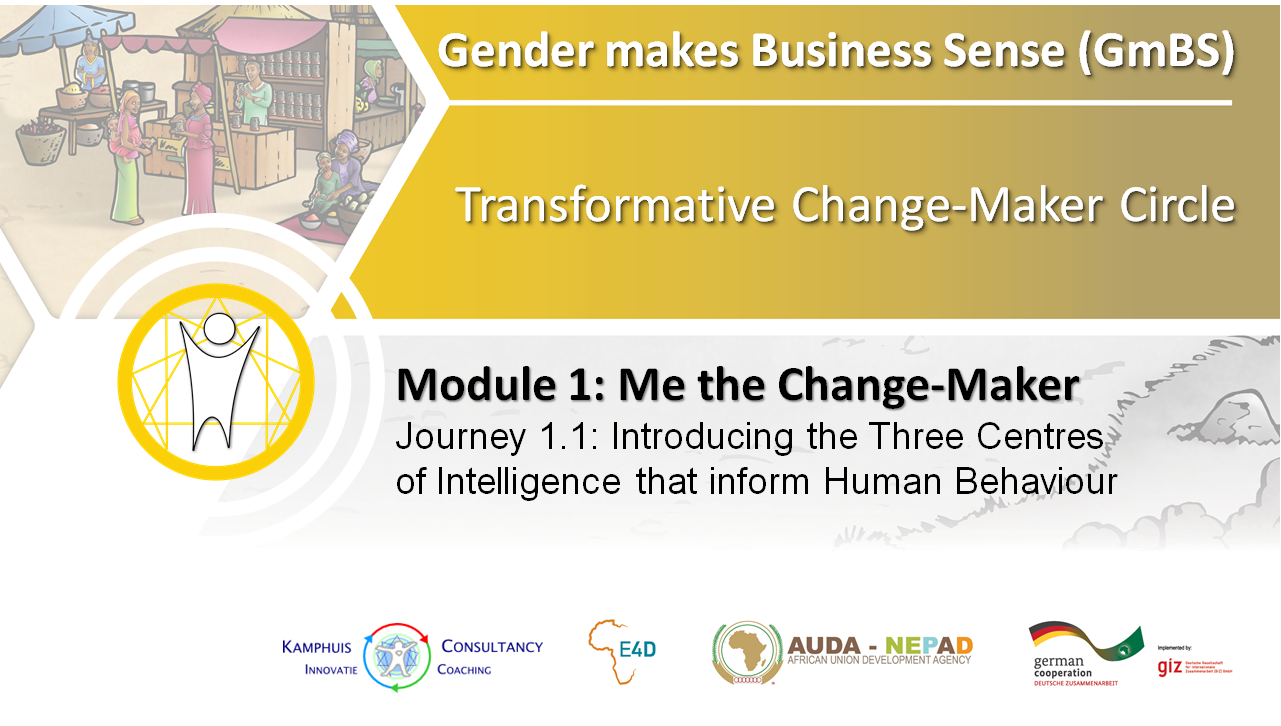
Our awareness will impact will influence how we facilitate the process of change. The InnovationCircle as an approach looks at the human side of individual, group and community change. And you as a facilitator are also part of this human web of interaction.
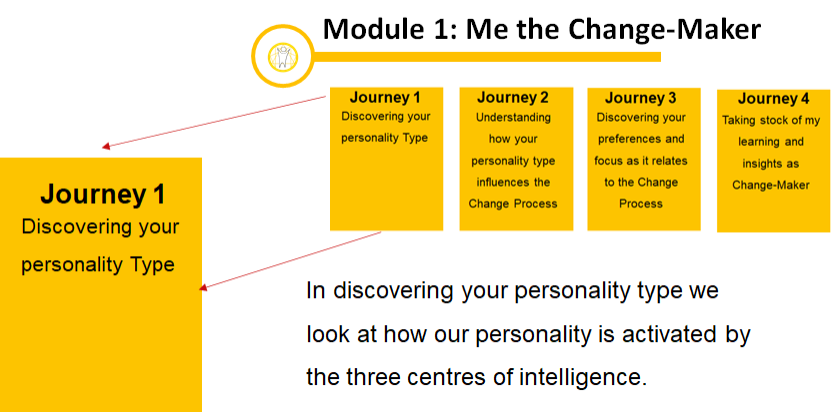
In Part 1 of the Journey we start with you as Change-Maker as we explore how people respond, engage and build connection and relationship with one another. Our working together brings us in our role as a person, how we work together with others and how we deal with the outside world. Our working with the InnovationCircle stages have three layers with specific impact and ways of working.
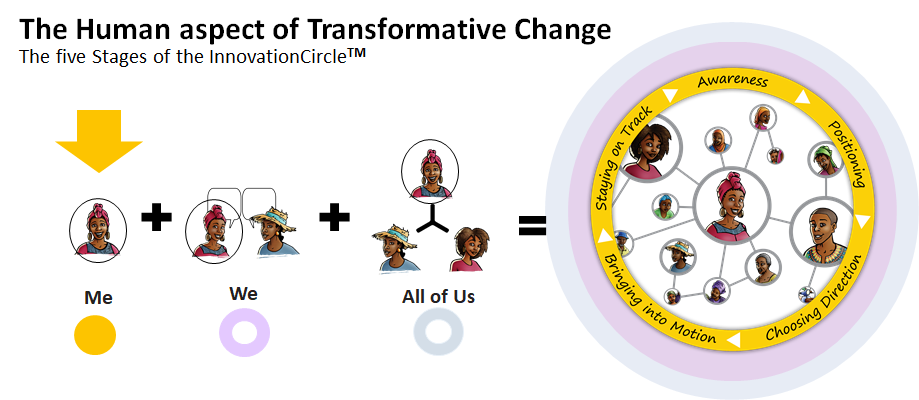
- Me – it starts with me and my talents and skills. (e.g. me as the agripreneur, me as facilitator).
- We – you with me in how we connect, relate and partner with others. The We is about how we support each other in our roles (gender roles for instance) and encourage each other to participate from our talents (e.g. we – agripreneur and those in their household or employ)
- All of Us – this is about acknowledging the people/or players that are part of the greater environment. For example (All of us – greater market environment, or government/societal influences)
We start with you as Change-Maker as we explore how people respond, engage and build connection and relationship with one another. We all bring our personality with us, it makes a successful working with the InnovationCircle dependable on how we deal together with all our different personalities.
As personalities we all have three centres in our body. They are intelligences that drive our behaviour, we call them the three Centers of Intelligence.
In many ancient spiritual traditions, in modern psychology and more recently in the field of neuroscience it is confirmed, that we have “three brains” in the body. Your HEAD brain (Thinking intelligence), your HEART brain (Emotional intelligence) and your GUT Brain (Doing intelligence).
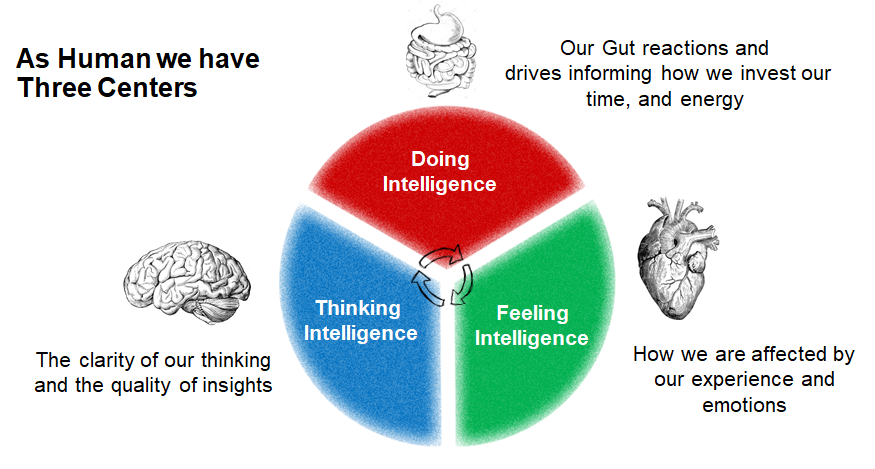
The Doing Intelligence is about our gut reactions. It is a body intelligence that drives how we operate.
The Feeling Intelligence which is about what happens in the interpersonal sphere – how our sense of self is impacted by how we experience our relating to others.
The Thinking Intelligence is about using the mind for guidance on how we deal with the day to day.
So we all relate to these intelligences.
(Audio 1.5: Even though we all have these three intelligences, we tend to favour one of them, which becomes the centre we feel most comfortable using. This comfort is habitual and when under stress we go back to our preferences. However, when we are most stressed we have an imbalance way of using a center of intelligence and this we can see in our behaviour. The inner journey of the change-maker involves learning to grow in our awareness of each intelligence and to do practices that support the ‘three brains’ working together.)
We can become even more concrete in the ways we see the three centers in human behaviour. The centers are the drivers and enablers of the behaviours of our personality.
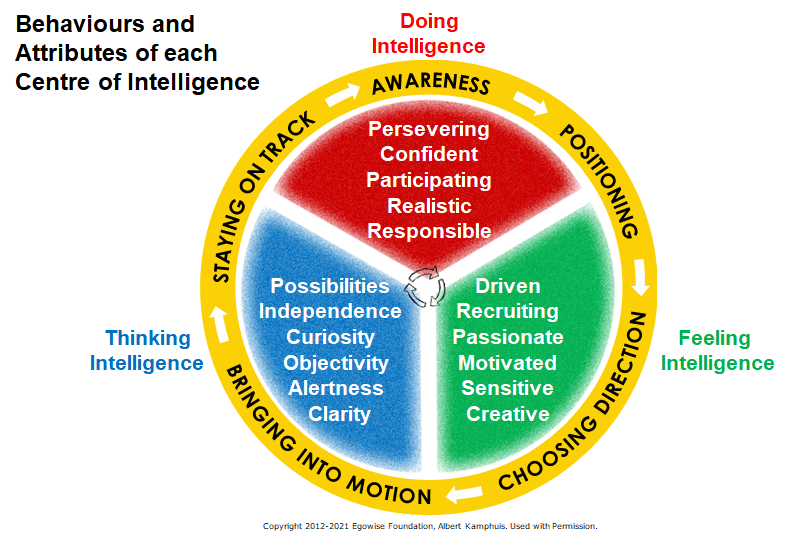
Each Intelligence has particular qualities that we can observe in ourselves and in others:
The Doing intelligence helps us land with our feet in life - the natural intelligence of our bodies as support.
Doing: These personality types have in common assets and liabilities which involve instinct. When they are mentally and emotionally healthy, these types relate to their environment and to others exceptionally well, responding from a deep wisdom within themselves, frequently as leaders of one kind or another. However, when they are unhealthy (overloaded), they become out of balance with how they relate to the world and other people.
The Feeling intelligence truly allows us take in the impressions of our life and appreciate our experience on earth,
Feeling: These personality types have common assets and liabilities which involve their feelings. When these personality types are mentally and emotionally healthy, their feelings are the focus of what is admirable about their personalities, enabling them to become highly valued for their interpersonal qualities. When they are unhealthy (overloaded), however, their emotions are out of balance in one way or another, they become out of balance with how they relate to the world and other people.
TheTthinking intelligence lets us embody creative thinking that guides what we do in the world.. As we develop our awareness of one of the intelligences, it invites the other intelligences in support.
Thinking: These personality types have common assets and liabilities which involve thinking. When these types are mentally and emotionally healthy, their remarkable insights, ideas, and ability to understand things is unequaled by the other personality types: they are frequently responsible for outstanding practical, creative, or scientific achievements. When they are unhealthy (overloaded), however, their thinking gets out of balance in one way or another, they become out of balance with how they relate to the world and other people..
We have all these three centers in us and ideally, when mentally and emotional healthy, our centres should work together like an orchestra.
We are all born with a preference of one of the Intelligence Centers. Our habits are first of all developed on the basis of that preferred center we feel most comfortable using. It can be a live long journey to get in balance with all three centers to find our potential as our way of living our lives. This is the ongoing journey of personal development for the personal change-maker.
This inner journey involves learning to grow in our awareness of each intelligence and to do practices that support the ‘three brains’ working together. Working with others needs that balance in the Change-Maker to get an optimal working InnovationCircle approach.
For every center there are three personality types, which means we work with nine personality types. Each Type shows a range of behaviours – what we are like when we are at our best and what happens when we become stressed (overloaded).We tend to favour one Type as our most prefered one.
We introduce the nine personality types to make the inner journey very personal and specific.
Now find your most prefered, your basic personality type among the nine personalities that also have their particular preferences for a part of the InnovationCircle workings. We recommend taking a quick sorter called The Quest.
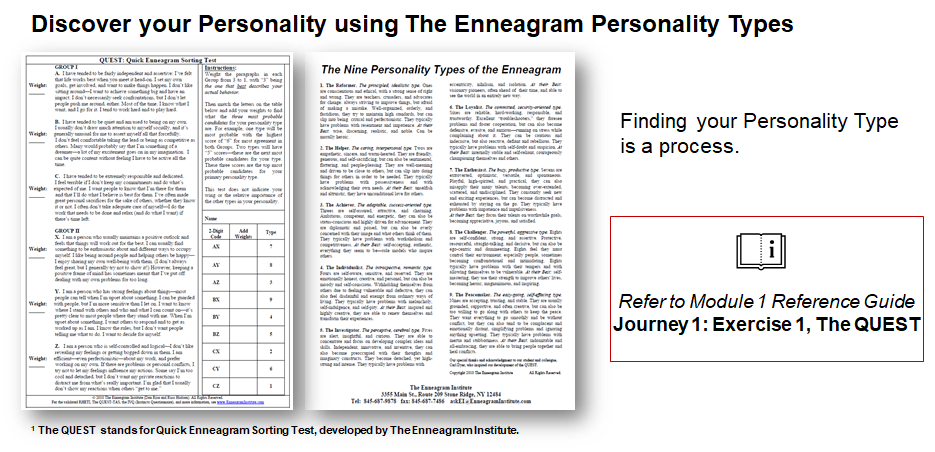
The test of the Enneagram Institute is a start to find your type. This personality test helps you sort through which of the Nine Types stands out more than the others.
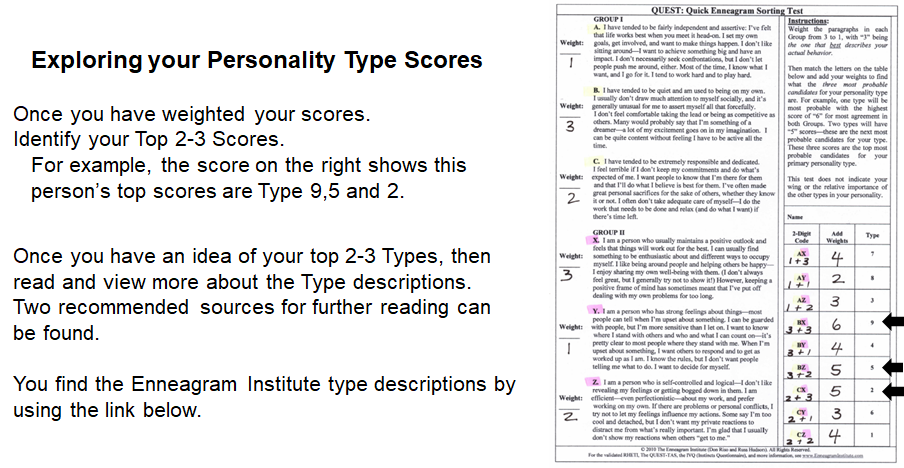
Look at the Enneagram Institute type descriptions and when you see the typenames click on them for more information of the types.
We start with the Enneagram Institute names of the type test as we place them around the InnovationCircle, the three doing, feeling and thinking types.
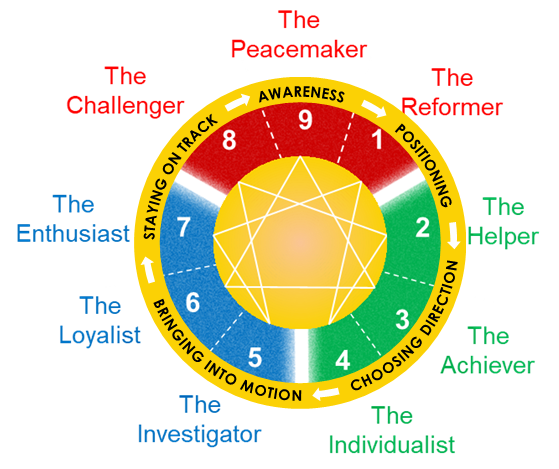
As a Change-Maker we start to look at what needs attention to that we invite more balance and stimulate the optimal working of the InnovationCircleTM approach. Learn more about your type.
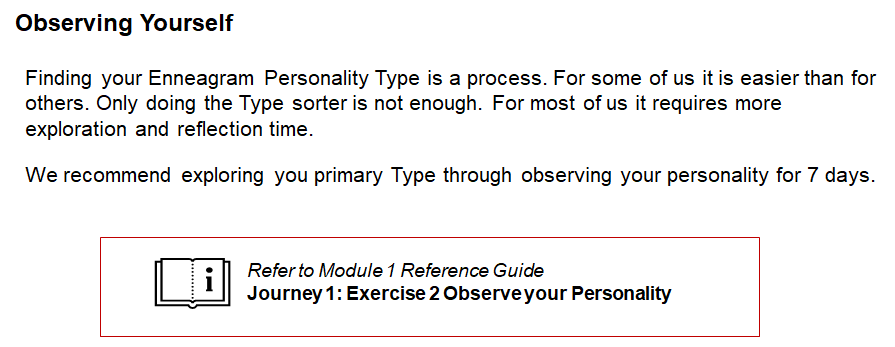
(Audio project 2: The purpose of identifying your personality Type within the context of the InnovationCircleTM is about learning to observe your personality preferences. A foundational and ongoing practice for a Change-Maker is to observe yourself. We invite you to take one week to observe yourself. If you wish to internalise your observations, it is recommended that your write short notes.)
Go to the next Journey to deepen your understanding of your type.